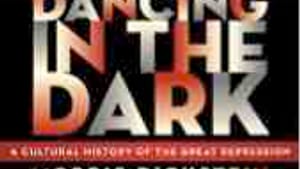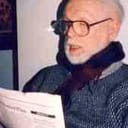Stay in the Loop
BSR publishes on a weekly schedule, with an email newsletter every Wednesday and Thursday morning. There’s no paywall, and subscribing is always free.
Great Depression, greater paradox
Dickstein's "Dancing In the Dark'

Is the persistent recession depressing you? If so, I have the perfect prescription: Morris Dickstein's Dancing in the Dark: A Cultural History of the Great Depression.
American studies have come a long way since the pioneering volumes like F.O. Matthiessen's American Renaissance or Henry Nash Smith's Virgin Land: The American West as Symbol and Myth. They framed the canvas, so to speak. They identified the diverse details. Heavy hitters like Dickstein (of New York's Graduate Center at City University of New York) now take the trickier step of revealing the deeper connections between the details. This is much more complicated than explicating Whitman or identifying the importance of Melville.
This approach deals with more than just literature— much more. Take the tangled tale of black literature during the Depression. Dickstein offers fine coverage of major writers like Langston Hughes and Ralph Ellison. But he also spotlights one issue I missed: W.E.B. Dubois had problems with the so-called Harlem Renaissance, which could be scorned as a matter of white liberals slumming uptown, confronting anomalies like the Cotton Club, where black performers entertained rich white audiences (no "colored" allowed). Dubois' Talented Tenth were supposed to raise their black brothers, not entertain white liberals.
In Dickstein's pages, Zora Neale Hurston finally gets adequate coverage for her attention to black folklore, earned during the era of Margaret Mead. Richard Wright's complex relationships with leftist politics are also thoroughly explored.
New York Jews
As a New York Jew, Dickstein is especially interested in Henry Roth's late-blooming Call It Sleep, as well as Michael Gold's Jews Without Money. And John Steinbeck's The Grapes of Wrath is thoroughly examined, as well as its film treatment. But here we also see Steinbeck drifting rightward and apolitical.
Especially useful are Dickstein's "compare and contrast" analyses of James Agee and Walker Evans with Erskine Caldwell and Margaret Bourke-White. Dickstein also provides perceptive coverage of New Deal programs like murals in public buildings and theatrical programs with the likes of Clifford Odets.
But as befits an America lit professor who early on taught film, Dickstein also provides critiques of Jimmy Cagney and other stock movie characters who illuminate the dark side of the Depression, not to mention Frank Capra's ambivalence about the good guy's chances in a hostile environment.
Astaire lightens the gloom
Dickstein is especially enthusiastic about the Gershwins and Fred Astaire. They made dancing in that economic darkness thrilling. Jazz and the swing bands lightened the gloom. Busby Berkeley is compared with Hitler's muse Leni Riefenstahl in an astonishing but not wholly convincing manner.
Dickstein's discussion of the sleek physical side of the Depression— the Empire State Building, the Chrysler and Rockefeller Center— explores the paradox of external splendors forming the upsides of daily downers. Industrial design assumes its innovative role of teasing consumers to open their wallets to the likes of Raymond Loewy and Walter Dorwin Teague.
Can artists change the world?
"Artists and performers rarely succeed in changing the world," Dickstein concludes, "but they can change our feelings about the world, our understanding of it, the way we live in it. They produced a rich, sometimes paradoxical culture by keeping their eyes trained on the ups and downs of individual lives within the larger social crisis, to which they bore eloquent witness. Their work and serious play did much to ease the national trauma. They were dancing in the dark, moving in time to a music of their own, but the steps were magical."
With all due respect to Dickstein's intellectual forebears in American studies, he has elevated our intellectual level several levels, showing clearly and eloquently how the many pieces of a complex industrial culture fit together. You could live a semester of small takes from this "course" of a book. Your America will never be as simple, or as interesting.
American studies have come a long way since the pioneering volumes like F.O. Matthiessen's American Renaissance or Henry Nash Smith's Virgin Land: The American West as Symbol and Myth. They framed the canvas, so to speak. They identified the diverse details. Heavy hitters like Dickstein (of New York's Graduate Center at City University of New York) now take the trickier step of revealing the deeper connections between the details. This is much more complicated than explicating Whitman or identifying the importance of Melville.
This approach deals with more than just literature— much more. Take the tangled tale of black literature during the Depression. Dickstein offers fine coverage of major writers like Langston Hughes and Ralph Ellison. But he also spotlights one issue I missed: W.E.B. Dubois had problems with the so-called Harlem Renaissance, which could be scorned as a matter of white liberals slumming uptown, confronting anomalies like the Cotton Club, where black performers entertained rich white audiences (no "colored" allowed). Dubois' Talented Tenth were supposed to raise their black brothers, not entertain white liberals.
In Dickstein's pages, Zora Neale Hurston finally gets adequate coverage for her attention to black folklore, earned during the era of Margaret Mead. Richard Wright's complex relationships with leftist politics are also thoroughly explored.
New York Jews
As a New York Jew, Dickstein is especially interested in Henry Roth's late-blooming Call It Sleep, as well as Michael Gold's Jews Without Money. And John Steinbeck's The Grapes of Wrath is thoroughly examined, as well as its film treatment. But here we also see Steinbeck drifting rightward and apolitical.
Especially useful are Dickstein's "compare and contrast" analyses of James Agee and Walker Evans with Erskine Caldwell and Margaret Bourke-White. Dickstein also provides perceptive coverage of New Deal programs like murals in public buildings and theatrical programs with the likes of Clifford Odets.
But as befits an America lit professor who early on taught film, Dickstein also provides critiques of Jimmy Cagney and other stock movie characters who illuminate the dark side of the Depression, not to mention Frank Capra's ambivalence about the good guy's chances in a hostile environment.
Astaire lightens the gloom
Dickstein is especially enthusiastic about the Gershwins and Fred Astaire. They made dancing in that economic darkness thrilling. Jazz and the swing bands lightened the gloom. Busby Berkeley is compared with Hitler's muse Leni Riefenstahl in an astonishing but not wholly convincing manner.
Dickstein's discussion of the sleek physical side of the Depression— the Empire State Building, the Chrysler and Rockefeller Center— explores the paradox of external splendors forming the upsides of daily downers. Industrial design assumes its innovative role of teasing consumers to open their wallets to the likes of Raymond Loewy and Walter Dorwin Teague.
Can artists change the world?
"Artists and performers rarely succeed in changing the world," Dickstein concludes, "but they can change our feelings about the world, our understanding of it, the way we live in it. They produced a rich, sometimes paradoxical culture by keeping their eyes trained on the ups and downs of individual lives within the larger social crisis, to which they bore eloquent witness. Their work and serious play did much to ease the national trauma. They were dancing in the dark, moving in time to a music of their own, but the steps were magical."
With all due respect to Dickstein's intellectual forebears in American studies, he has elevated our intellectual level several levels, showing clearly and eloquently how the many pieces of a complex industrial culture fit together. You could live a semester of small takes from this "course" of a book. Your America will never be as simple, or as interesting.
What, When, Where
Dancing in the Dark: A Cultural History of the Great Depression. By Morris Dickstein. W.W. Norton, 2009. 624 pages; $29.95. www.amazon.com.
Sign up for our newsletter
All of the week's new articles, all in one place. Sign up for the free weekly BSR newsletters, and don't miss a conversation.
 Patrick D. Hazard
Patrick D. Hazard